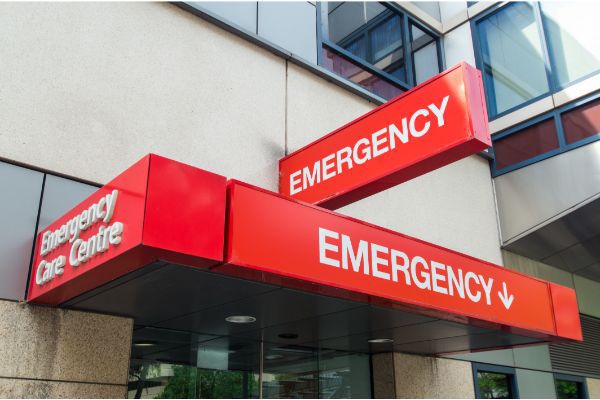
Legally, excessive speeding is punishable as an infraction. However, there are times when a medical emergency might warrant breaking the speed limit in the interest of protecting life.
When you are stopped by law enforcement and issued a citation for speeding, it is advisable to consult a California traffic attorney.
Cornell Law School’s Legal Information Institute (LII) defines this as the Defense of Necessity. “Necessity: sometimes referred to as the “choice of evils,” the necessity defense allows an individual to engage in otherwise unlawful conduct if by doing so the individual avoids a greater harm.”
California Speed Traffic Laws
Despite what most people think, it is not okay to drive five to ten mph over the limit, even if traffic allows it. However, according to traffic law, you may never drive “…at a speed greater than is reasonable or prudent…” Despite what most people believe, it is not the LEO who decides what is reasonable or prudent, but the traffic court judge.
The California Vehicle Code is split into four major speed law sections: Basic, Prima Facie, Minimum, and Maximum.
The Basic Law
Drivers are prohibited from exceeding a safety limit concerning the current weather and road conditions. In such circumstances, you can get a ticket even when driving within the limit. The officer determines this based on weather, the road surface, number of cars on the road, or whether there are pedestrians or cyclists on the road.
When the LEO determines that your speed was not “reasonable or prudent,” given those conditions, they will issue a ticket based on the mph over what they believe to be the prudent speed. Then, it is up to you and your attorney to convince the judge that the LEO was mistaken.
As with all laws, the state bears the “burden of proof,” and must convince the judge that you are guilty beyond a “reasonable doubt,” which is the legal standard.
This is covered by CVC Section 22350, Speed Laws.
Maximum Speed Laws
This law prohibits drivers from going over a posted limit. Many California highways have a maximum limit of 65 mph, but some roads, 70 mph. However, on two-lane highways without dividers, the maximum limit is 55 mph unless posted otherwise. CVC Sections 22349 and 22356, Speed Laws, cover maximum speeds on CA freeways.
Likewise, all vehicles that fall under CVC Section 22406, Speed Laws, have a maximum statewide speed limit of 55 mph. This section of code typically applies to commercial vehicles, but could apply to passenger cars pulling another vehicle or trailer.
Minimum Speed Law
According to this law, you can be cited for driving too slowly if you are interfering with the flow of traffic. There are roads with the posted minimum limit. Typically, on CA highways where the speed limit is 65 or 70 mph, the minimum speed is 40 mph.
However, you can also be ticketed for driving slow in lanes designated for overtaking or passing. Regardless if you believe traffic is going too fast, it is not up to you to arbitrarily get in the passing lane and go the speed limit or slower to regulate traffic.
CVC Section 22400, Other Speed Laws, covers the minimum speed law.
“Prima Facie” Speed Limits
This law is meant to establish maximum limits in areas without restrictions. The limits include:
- Residential areas, school zones, or residential areas, the limit is 25 mph.
- Railroad crossings, alleys, and highway intersections with less visibility than 100 feet, the limit is 15 mph.
Driving over 100 mph is a major infraction with a base fine of $300 to $500 before the added surcharges, which could make it well over $1,000 and subsequent convictions could result in a fine around $2,600 total. The conviction and the DMV-assessed two NOTS points will stay on your record for seven to ten years. Your auto insurance premiums could double or triple.
For first-time offenders, the base fine could be $100, depending on case circumstances, such as a medical emergency. However, after adding the state and county surcharges, fees, and penalties, ten in all, the total could be nearly $500. The judge can impose a 30-day suspension of driving privileges at their discretion.
How Do LEOs Determine Your Speed?
Pacing is when the LEO drives behind you for a specified distance and attempts to match the speed of their car to yours.
Visual Average Speed Computer and Recorder (VASCAR) is considered a “speed trap” under CA law. The LEO picks two spots on the road when your car passes the first spot, the LEO starts a stopwatch and then stops it when you pass the next landmark. They can estimate your speed by using the time it took you to go from one spot to the next. However, VASCAR involves too much human error to be accurate, so a CA Appeals Court forbade its use.
Radar is short for "radio detection and ranging" and typically uses an ultra-high frequency (UHF) radio wave emitting from a “radar gun” which bounces off the suspect vehicle to measure its speed. Lidar is a similar speed tracking device that uses laser guns to measure speed.
Both of these devices are precise but require periodic calibration and LEO training. If the required time has passed for either the training or calibration, the ticket could be dismissed.
Bigger & Harman, APC, Can Assist You with a Speeding Ticket in Tulare County
Call Bigger & Harman, APC, (661) 349-9300. Se habla Español (661) 349-9755.
We are the Bakersfield Law Firm that handles nothing but traffic issues. We can also represent you at a DMV NOTS Hearing to help you keep your license from being suspended.
Email: attorney@biggerharmanlaw.com.
References:
The 2020 CA Driver Handbook.pdf
The Cornell Law School’s LII definition of Defense of Necessity
